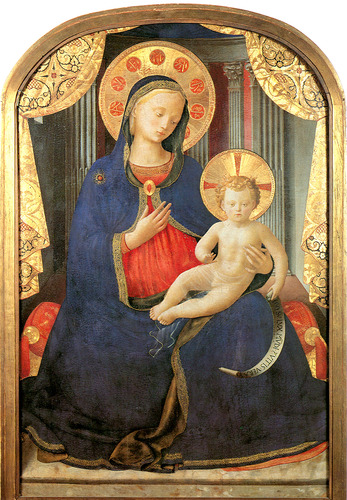
The Life of the Blessed Virgin Mary by Blessed Anne Catherine Emmerich
4. MARY TRAVELS FROM EPHESUS TO JERUSALEM.
After three years' sojourn here Mary had a great longing to see Jerusalem again, and was taken there by John and Peter. Several of the Apostles were, I believe, assembled there: I saw Thomas among them and I think a Council was held at which Mary assisted them with her advice. On their arrival at Jerusalem in the dusk of the evening, before they went into the city, I saw them visiting the Mount of Olives, Calvary, the Holy Sepulcher, and all the holy places outside Jerusalem. The Mother of God was so sorrowful and so moved by compassion that she could hardly hold herself upright, and Peter and John had to support her as they led her away.She came to Jerusalem from Ephesus once again, [185] eighteen months before her death, and I saw her again visiting the Holy Places with the Apostles at night, wrapped in a veil. She was inexpressibly sorrowful, constantly sighing, O my Son, my Son'. When she came to that door behind the palace where she had met Jesus sinking under the weight of the Cross, she too sank to the ground in a swoon, overcome by agonizing memories, and her companions thought she was dying. They brought her to Sion, to the Cenacle, where she was living in one of the outer buildings. Here for several days she was so weak and ill and so often suffered from fainting attacks that her companions again and again thought her end was near and made preparations for her burial. She herself chose a cave in the Mount of Olives, and the Apostles caused a beautiful sepulcher to be prepared here by the hands of a Christian stonemason. [At another time Catherine Emmerich said that St. Andrew had also helped in this work.] During this time it was announced more than once that she was dead, and the rumor of her death and burial was spread abroad in Jerusalem and in other places as well. By the time, however, that the sepulcher was ready, [186] she had recovered and was strong enough to journey back to her home in Ephesus, where she did in fact die eighteen months later. The sepulcher prepared for her on the Mount of Olives was always held in honor, and later a church was built over it, and John Damascene (so I heard in the spirit, but who and what was he?) [187] wrote from hearsay that she had died and been buried in Jerusalem. I expect that the news of her death, burial-place, and assumption into heaven were permitted by God to be indefinite and only a matter of tradition in order that Christianity in its early days should not be in danger of heathen influences then so powerful. The Blessed Virgin might easily have been adored as a goddess.
CONTENTS | NEXT | FOOTNOTESCopyright ©1999-2023 Wildfire Fellowship, Inc all rights reserved

 Keep Site Running
Keep Site Running